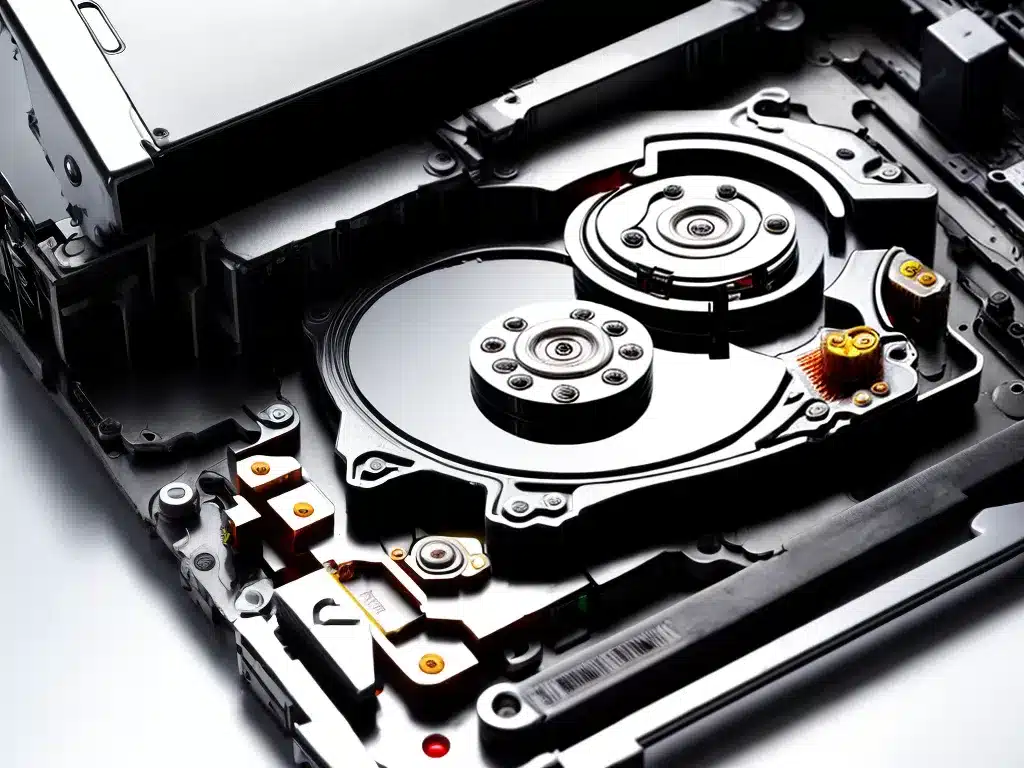
Recovering Data From Corrupted Drives
Introduction
Data recovery from corrupted drives can seem daunting, but with the right tools and techniques, recovering your valuable data is possible. As someone who has gone through the recovery process myself, I want to share my knowledge to help others facing this problem. A corrupted drive does not necessarily mean all data is lost forever. Here is an in-depth guide on recovering data from corrupted drives.
Understanding Drive Corruption
Before looking at recovery methods, it’s important to understand what causes drive corruption in the first place. Some common causes include:
-
Physical damage – Dropping a hard drive, power surges, electrical shorts, fire/water damage, etc. can physically damage the drive.
-
Logical errors – Buggy firmware, outdated drivers, virus infections, accidental file deletion, etc. can corrupt the file system logical structure.
-
Bad sectors – Permanently damaged regions on the disk platters can develop over time. Attempts to read these sectors fail.
-
Partition and boot errors – Errors or interruptions when creating partitions or during the boot process can corrupt data.
Drive corruption manifests in different ways like inaccessible files and folders, missing files, strange behavior, the inability to boot, or outright drive failure. Understanding the type of corruption helps determine the best recovery method.
Software-Based Recovery Methods
Before attempting any advanced data recovery, try using software-based recovery tools first. They are inexpensive, easy to use, and can extract data in many cases.
Disk Utilities
Tools like Chkdsk in Windows and fsck in Linux can scan drives and fix various file system errors. Fixing the file system logical structure often brings files and folders back to normal.
Data Recovery Software
More advanced tools like Recuva, EaseUS, R-Studio, and Stellar scan drive images or connected drives. They recover lost data using advanced algorithms.
Cloning Tools
Creating a full disk image is crucial when recovering data from failing drives. Tools like Clonezilla, Macrium Reflect, and EaseUS Todo Backup can create ideal image backups for recovery.
Using software recovery tools should be the first method attempted in most cases. But if they are unsuccessful, more advanced techniques are required.
Hardware-Based Recovery
When software cannot recover lost data, specialized data recovery hardware is the next step.
Using a Dedicated Recovery Service
Services like Kroll Ontrack, DriveSavers, or Recovery Force have extensive capabilities unavailable to the average user. The downside is high costs starting from $300-600 for basic recovery up to thousands for extensive recovery work.
DIY Hardware Recovery Tools
While pricey, there are powerful tools available for DIY recoveries:
-
PC3000 Portable – Hardware + software for effectively diagnosing drive issues.
-
Deepspar Disk Imager – Hardware imager for imaging heavily damaged drives.
-
PC-3000 UDMA – Advanced USB based recovery hardware.
With training and research, an intensive DIY recovery is possible using such equipment. But it requires significant technical skill.
Sending Drives to a Cleanroom
For drives with mechanical issues or platter damage, specialized cleanroom work is often the only solution. Cleanrooms allow safely disassembling drives and working on them in dust-free environments. The process involves:
- Further disassembly of the drive to access platters and heads.
- Repairing or replacing damaged components.
- Imaging platters using specialized tools.
- Reassembling drive after repairs.
This micromechanical work can recover data despite physical damage on platters. Costs easily exceed $1000 but recovering critical data is often worth it.
When To Not Pursue Further Recovery
At a certain point, continuing recovery efforts provide diminishing returns. Significant physical damage coupled with logical corruption often makes data irretrievable. The recovery costs involved also start exceeding the value of the data.
Knowing when to stop prevents wasting effort on an impossible recovery job. If basic software cannot recover data, the damage is likely too great already.
Closing Thoughts
Recovering data from corrupted drives requires using the right process:
- Start with software recovery tools.
- If unsuccessful, use hardware methods or a professional service.
- For mechanical issues, cleanroom work is the final option.
- At some point, accept data may be unrecoverable.
With patience and the proper techniques, recovering data from even significantly corrupted drives is possible in many cases. Hopefully this guide provides a good starting point for anyone faced with this situation. Let me know in the comments if you have any other tips I may have missed!












